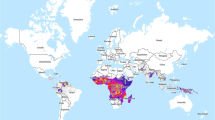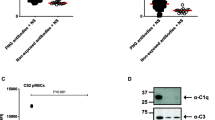Abstract.
The human malarial parasite Plasmodium falciparum is responsible for an estimated 300–500 million clinical cases and 1–3 million deaths annually. At particular risk of developing severe, life-threatening malaria-associated complications are women during their first pregnancy. The observed pathologies, such as premature delivery, intrauterine growth retardation, abortion, and death of the mother and the newborn, are in large parts due to the parasite's ability to render infected erythrocytes adhesive and sequester in the intervillous space of infected placentas. In subsequent pregnancies, women are protected from maternal malaria through antibodies that prevent cytoadhesion of P. falciparum-infected erythrocytes in the placenta. Here, we summarize our current knowledge of the pathophysiological processes underpinning maternal malaria and discuss emerging concepts for intervention.
Similar content being viewed by others
Author information
Authors and Affiliations
Additional information
Electronic Publication
Rights and permissions
About this article
Cite this article
Andrews, K.T., Lanzer, M. Maternal malaria: Plasmodium falciparum sequestration in the placenta. Parasitol Res 88, 715–723 (2002). https://doi.org/10.1007/s00436-002-0624-5
Received:
Accepted:
Issue Date:
DOI: https://doi.org/10.1007/s00436-002-0624-5




